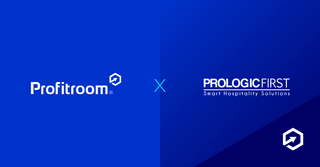The Ultimate Guide to Revenue Management
Date
11.12.20
Type
Articles
Category
Revenue

Revenue management is an important analytic tool for predicting the behaviour of customers in the hospitality industry. For hoteliers, a strong revenue management strategy is key to operating a successful and profitable business. It’s often defined as; “selling the right product to the right customer at the right time for the right price and through the right channel.” In this blog we explore revenue management, discuss the terminology and metrics, and look at some common pricing strategies.
The Origins of Revenue Management
So where did revenue management begin? We have to travel back in time to the 1970’s where the concept of revenue management first began in the airline industry. It emerged at a time of deregulation in American aviation and when new, cost-efficient airlines were appearing. BOAC (present-day British Airways) was the first to experiment with the idea. The company advertised Earlybird discounts in order to generate a demand for seats that would likely fly unsold. American Airlines followed by unlocking the theory that higher yields were attainable through intelligent pricing. It discovered a way to introduce dynamic pricing by producing customer demand. This was known as yield management.
Hotel revenue management took off in the 1980s after a meeting between Robert Crandall , CEO of American Airlines and Bill Marriott, executive chairman of Marriott International. Crandall explained to Marriott how yield management helped American Airlines solve its perishable inventory problems. Perishable inventory in the airline and hotel industries is unsaleable inventory, once a plane has taken off or a night has passed. The success of Marriott’s yield management inspired other hotel brands to implement their own practices.
How Revenue Management Works
Whereas yield management focuses on offering the right product to the customer at the best price, revenue management has evolved to make the consumer the focal point. It revolves around willingness to pay (WTP), which is the maximum a customer is willing to pay for a product or service. In the hotel industry, it means not selling a room one day at a low price to sell it the next at a higher price, and selling a room at a lower price if demand for said room is expected to decrease.
As with the majority of businesses, hotels have ongoing overheads that must be paid whether a room is sold and regardless of the amount of money generated from guest purchases. Revenue managers and real-time revenue management systems can guarantee that costs are met by making informed decisions through the analysis of current and historical data. Consumer behaviour and market situations are studied in order to make future predictions, create an appropriate pricing strategy and choose the correct distribution channels.
An important factor to consider is that revenue management is only achievable for perishable inventory — a room that isn’t sold today can’t be offered or sold the next — and products, such as hotel rooms that have a limited number. As such, hotel revenue managers and revenue management systems require the ability to forecast future demand and adjust strategies accordingly. Doing so reduces the risk of too many unsold rooms and rooms sold at rates lower than they could be.

Revenue Management Terminology and Performance Indicators
As with all analytical disciplines, revenue management has a long list of specialised terminology. The following are some of the most frequently occurring terms, which are all important to analysis and implementation.
Average Daily Rate (ADR) — A statistical unit used to calculate the average price of a hotel room sold on a specific day. It’s calculated by taking the average revenue earned from rooms and dividing it by the number of rooms sold. ADR aids in the comparison of pricing trends and competitiveness against other hotels.
Average Length of Stay (ALOS) — The average amount of days guests stay at a hotel during a specified period. It helps to understand customers and their staying behaviour. Fewer arrivals and longer stays lead to operational benefits such as fewer guest requests, lower amenity costs and reduced energy costs.
Booking Window (aka Lead Time) — The period of time between the guests or groups making reservations and the actual arrival date. This is particularly useful for making accurate pricing decisions.
Cost of Acquisition — The amount it costs a hotel to acquire a guest booking. Includes variables such as paying fees and commissions to brand websites, travel agents, online travel agents (OTAs) and other sales channels. The average cost of acquisition ranges from 15% to 25% of guest-paid revenue.
Occupancy Rate — A high-level success indicator that shows the percentage of occupied rooms in your hotel at a given time. Low occupancy can be an indicator of significant issues within the property.
Revenue Per Available Room (RevPAR) — A metric used to measure the performance of a hotel by calculating the revenue generated per room. It’s calculated by dividing total room revenue by the number of available rooms in the chosen period to be measured. Can also be calculated by multiplying the ADR with the Occupancy Rate.
Revenue Management Pricing Strategies for Hotels

A revenue management strategy is critical to a business’s ability to remain sustainable. A strategy should be adaptable to current industry conditions and recognise that pricing is susceptible to change from one day to the next. The following are examples of pricing tactics used by hotels:
Dynamic Pricing — The practice of varying the price of a product or service based on market demand; generally used to charge higher prices as demand rises.
Managing Booking Channels — From direct channels to walk-ins, OTAs and travel agencies, hotels have several booking channels running simultaneously. It’s possible to maximise revenue by closing less profitable channels during periods of high demand.
Open Pricing — The flexibility to set prices at varying levels depending on target markets and the distribution channels used. For example, a luxury hotel might offer discounted rates in the low-season to attract customers that wouldn’t usually stay with them. The ADR drops but the occupancy rate doesn’t.
Overselling — A strategy utilised in forecasting future cancellations and no-shows. If a hotel predicts 3 cancellations and 2 no-shows for a select day then it will oversell by 5 rooms. Often adopted with caution due to a hotel manager’s fear of having to turn away a guest with a confirmed reservation.
Setting Stay Restrictions — Increase revenue and profits by applying minimum length of stay (MinLOS) restrictions to rooms. A MinLOS requires guests to reserve for a minimum specified amount of consecutive nights and helps keep a steady occupancy rate during peak periods.
The bottom line is that with a robust hotel revenue management system in place you are able to better understand consumer behaviour and developments and trends in market conditions. In turn, the applied strategies can help drive more direct business and improve profitability. Get in touch today to find out how Profitroom can take your hotel’s success to the next level.
Book a free consultancy
to find out how we can help you increase your direct bookings.
Thank you for completing the form
The administrator of personal data is Profitroom SA, we will process the data provided by you in order to answer the request (Article 6 paragraph 1 letter f of the GDPR). (more)
Book a demo
* mandatory field


